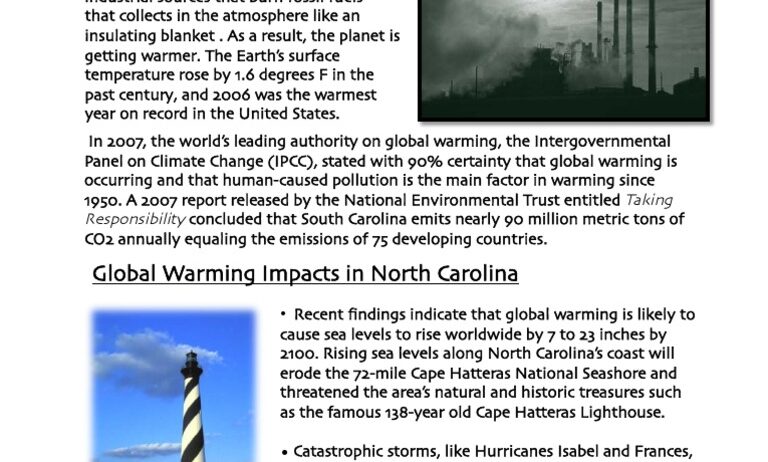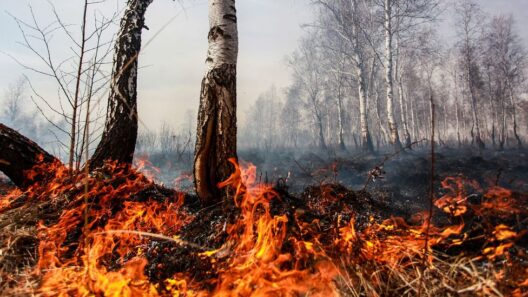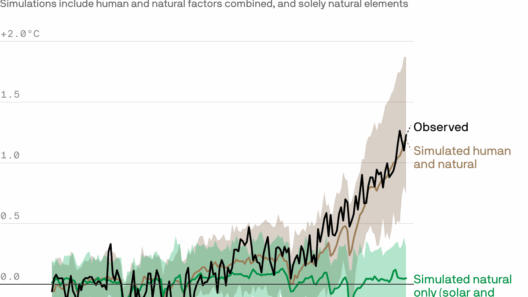The coastline of the United States, particularly from New York to North Carolina, is undergoing a metamorphosis driven by the relentless forces of global warming. The ramifications of climate change are starkly visible, prompting a reevaluation of how we perceive both our environment and the policies that govern it. This shifting perspective becomes urgent as both states grapple with rising sea levels, enhanced storm intensity, and ecological transformations that signal a new normal.
Starting with New York, the bustling metropolis situated at the confluence of land and sea faces pronounced vulnerabilities. The city has witnessed an alarming surge in sea levels, projected to rise as much as six feet by the end of the century if current trends persist. Superstorm Sandy starkly demonstrated the susceptibility of urban infrastructures to tempestuous weather patterns, decimating neighborhoods and exposing infrastructure inadequacies. The aftermath of such disasters serves as a grim reminder of the enormous stakes at play.
In response, New York has initiated a series of ambitious adaptation projects. Efforts include constructing surge barriers, enhancing natural buffers such as wetlands, and emphasizing green infrastructure aimed at mitigating flooding. These adaptations, driven by both necessity and foresight, underscore a critical pivot toward resilience. However, they also evoke questions about sustainability and equity—who bears the brunt of climate adaptation, and how are decisions made regarding urban land use?
Transitioning down the East Coast, North Carolina, often viewed through a lens of idyllic beaches and charming coastal towns, is similarly grappling with the existential threats posed by climate change. The state is experiencing some of the highest sea-level rises in the U.S., a situation exacerbated by its unique geography and extensive coastline. From the Outer Banks to Cape Fear, the state’s coastline tells a tale of erosion, habitat degradation, and escalating flood risks. The ongoing disappearance of beaches and wetlands raises concerns not only about the ecological balance but also about the economic viability of tourism and local industries reliant on a stable coastline.
The implications are profound. Communities in North Carolina are witnessing a gradual yet unmistakable erosion of their heritage and livelihoods. Fishing communities, once thriving on bountiful catches from now-vulnerable estuarine systems, are becoming increasingly precarious. The clash between human activities and environmental conservation becomes highlighted, sparking dialogues about sustainability and stewardship. As the coastline changes, the stories of these communities must be acknowledged; their adaptations and innovations amid loss create a tapestry of resilience worth exploring.
To fully grasp the complexities of this environmental crisis, it is necessary to examine the interactions between climate science, policy, and grassroots movements. Climate models project that by 2050, even a moderate increase in global temperatures could exacerbate hurricanes, leading to more destructive storms like those seen in recent years. The implications for both New York and North Carolina are staggering, necessitating a broad-based shift in climate policy that transcends state borders. Cooperation between states is paramount, as climate change knows no boundaries. Collaborative research initiatives and joint disaster response strategies can play a significant role in fostering a more resilient coastal zone.
Concurrently, it is essential to highlight the human dimension of this crisis. The stories of individuals and families displaced by flooding speak volumes about the urgency to act. Marginalized communities often bear the brunt of environmental degradation, with limited resources to adapt or relocate. Therein lies a critical intersection of environmental justice; as both New York and North Carolina work toward resilience strategies, equity must remain at the forefront. The challenge lies in creating inclusive policies that empower vulnerable populations, ensuring that no one is left behind in the struggle against climate change.
The role of education and public awareness in this discourse also cannot be overstated. Informing citizens about the realities of climate change, its local manifestations, and possible solutions fosters a culture of environmental stewardship. Workshops, community meetings, and school programs designed to educate the public can equip future generations with the knowledge necessary to navigate and mitigate these effects. In this landscape of emerging challenges, curiosity must drive investigation and innovation, compelling people to engage with their surroundings actively.
As we map out the scenarios of what might be lost—historical landmarks, coastal ecosystems, and communities—it becomes increasingly clear that our future hinges on the actions taken today. The linkage between New York and North Carolina serves as a microcosm of the broader statewide and nationwide challenges posed by climate change. While the road ahead is fraught with uncertainty, it also promises opportunities for transformative leadership and collective action.
In summation, the coastal regions stretching from New York to North Carolina epitomize the profound changes wrought by global warming. Navigating this terrain requires not just an acknowledgment of the scientific realities but also a radical shift in how we view our relationship with nature and one another. Embracing adaptation, fostering community resilience, and ensuring equitable responses are imperative. Through this lens, we can reimagine our coasts, not merely as static boundaries but as dynamic spaces welcoming innovative ways to cope with an ever-changing world.







